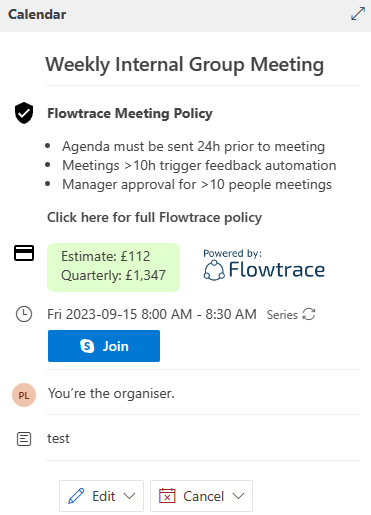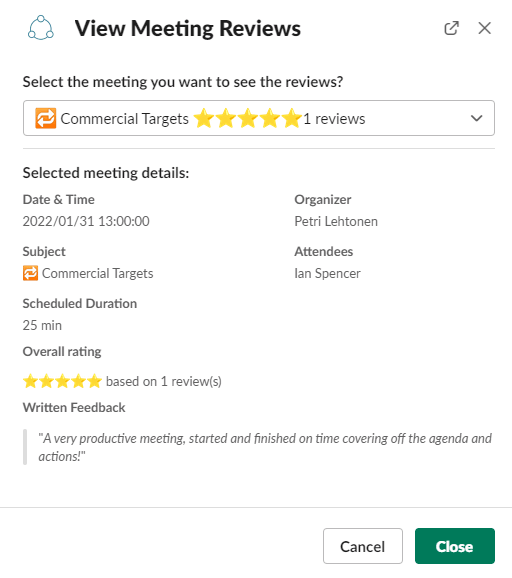The ability to conduct effective team meetings has become a key factor in successful leadership. Team meetings, when managed skillfully, are vital for aligning team goals, fostering collaboration, and nurturing a shared vision. The quality of these interactions directly impacts the efficiency and productivity of a team, making the mastery of meeting management a crucial skill for leaders. It's about transforming these gatherings from mundane, obligatory sessions into dynamic, results-driven forums that propel organizational success.
Deciding Whether the Meeting Could Be an Email
Deciding whether a topic warrants a meeting or could be addressed via email is vital. Leaders should consider the complexity and urgency of the subject matter; if the issue requires collaborative brainstorming or immediate decision-making, a meeting is justified.
However, for straightforward updates or non-urgent queries, an email suffices. This discernment is crucial, as a report by Atlassian indicates that the average employee attends 62 meetings a month, with half deemed unproductive. This translates to approximately 31 hours of lost time per employee, highlighting the importance of judicious use of meetings.
Leaders should also evaluate the potential for interactive dialogue in meetings versus the one-way communication of emails. By efficiently distinguishing between these two forms of communication, leaders can significantly conserve time and resources, ensuring that meetings are reserved for discussions that truly benefit from real-time, collaborative engagement.
Setting Objectives
Setting clear and measurable objectives for each meeting is a critical step in ensuring their effectiveness and relevance. Focused objectives guide the discussion and keep the team aligned.
Studies have shown that meetings with predefined objectives are significantly more productive. In fact, a Harvard Business Review survey found that 72% of senior managers reported meetings with clear objectives as highly productive.
Leaders should strive to define these objectives succinctly and share them with participants ahead of time. This not only prepares attendees for the discussion but also fosters a sense of purpose and direction. Objectives should be specific, achievable, and relevant to the team's broader goals.
By establishing and communicating these goals, leaders can enhance the meeting's focus, facilitate more effective decision-making, and ensure that the time spent in meetings directly contributes to organizational progress.

Clear Agenda
The creation of an effective and concise agenda is vital for maximizing meeting efficiency. A clear agenda acts as a roadmap, ensuring that discussions remain focused and time-efficient. In crafting an agenda, leaders should start by outlining key topics, allotting specific time slots for each item to prevent overruns.

According to a study by the University of North Carolina, well-structured agendas can reduce meeting times by up to 80%. Each agenda item should be purpose-driven, directly linked to the meeting's objectives, and include any pre-reads or preparatory work required.
Additionally, it’s beneficial to allocate time for open discussion towards the end, allowing for any unforeseen but relevant topics. This structured approach not only keeps the meeting on track but also respects participants' time, ensuring that meetings are not just gatherings, but productive work sessions where decisions are made, and actionable steps are determined.
Choosing the Right Participants (Allow Optional Invites)
Selecting the right participants is crucial for the effectiveness of a meeting. It’s essential to identify key individuals whose input is critical to the meeting’s objectives. This targeted approach not only ensures that the necessary expertise and decision-making authority are present but also respects everyone's time.

A study by the Harvard Business Review reveals that meetings with smaller, more relevant groups are 35% more likely to produce actionable results. Alongside mandatory attendees, consider optional invites for those who may benefit from the information shared but are not required for decision-making. This strategy balances inclusivity and efficiency, allowing for a broader perspective while keeping the group manageable.
Optional participants can contribute as needed, without feeling obligated to attend if their presence isn’t essential. This careful selection and categorization of attendees foster a focused and productive meeting environment, ensuring that time spent in meetings is both effective and valuable.
Setting Roles for the Meeting Including Facilitator
Assigning specific roles, such as a facilitator and note-taker, is a key factor in structuring a successful meeting. The facilitator plays a crucial role in guiding the meeting, ensuring that the agenda is followed, and managing the dynamics of the discussion. This role involves steering conversations, encouraging participation from all attendees, and resolving any conflicts that may arise.
A study by Microsoft found that meetings with a designated facilitator are 30% more likely to produce actionable outcomes compared to those without. The note-taker, on the other hand, is responsible for documenting key decisions, action items, and discussion points. This documentation is essential for keeping track of progress and ensuring accountability.
By clearly defining these roles, meetings can be more organized, focused, and productive. The facilitator's leadership in directing the flow of the meeting, combined with the note-taker's records, creates a structured environment conducive to effective decision-making and collaboration.
Facilitate Productive Discussions - Stick to Agenda
Facilitating productive discussions that adhere to the agenda is a critical skill for meeting facilitators. Effective facilitation involves actively guiding the conversation to ensure it remains focused on the predefined topics. Techniques include posing direct questions related to agenda items, summarizing key points to reaffirm the meeting's direction, and gently redirecting discussions that begin to drift.
According to a study by the University of Nebraska, meetings where the facilitator effectively steers discussions back to the agenda are 40% more efficient. Facilitators should also create an environment that encourages all participants to contribute, ensuring a diverse range of perspectives.
When discussions veer off course, it’s important to interject diplomatically, acknowledging the value of the point raised, and suggesting it be addressed in a different setting or at a later time. These tactics not only maintain the meeting's focus but also respect the participants' time and contributions, leading to more meaningful and result-oriented discussions.
Encourage Meeting Feedback
Encouraging and soliciting meeting feedback is crucial for the continuous improvement of meeting effectiveness. Feedback provides valuable insights into how meetings are perceived and areas where they can be enhanced. A survey by Forbes indicates that 92% of employees believe providing feedback effectively improves meeting productivity.

Leaders can solicit feedback through anonymous surveys, direct conversations, or digital feedback tools immediately following the meeting. This approach ensures candid responses and diverse perspectives. When collecting feedback, it's important to ask specific questions about the meeting's length, content, structure, and participant engagement. This targeted feedback should then be reviewed and integrated into future meetings.
Constructive implementation of feedback demonstrates to team members that their opinions are valued and considered, fostering a culture of continuous improvement and collaboration. By regularly seeking and acting upon feedback, leaders can refine their meeting strategies to ensure they are as productive and engaging as possible.
Set Follow-up Items
Setting clear follow-up items and assigning responsibilities at the end of a meeting is fundamental to ensuring that discussions translate into action. Clearly defined action items, with designated responsible parties and deadlines, create a roadmap for implementation and accountability. According to a survey by the Harvard Business Review, meetings that conclude with concrete action items see a 70% higher rate of follow-through compared to those without.
It's best practice to summarize these items at the meeting's end, ensuring everyone is aligned and understands their responsibilities. Additionally, documenting these actions and circulating them post-meeting reinforces accountability and provides a reference point for progress tracking.
Regular check-ins on these action items in subsequent meetings or through project management tools can further ensure that decisions made during the meeting are effectively acted upon. This approach not only maximizes the productivity of the meeting but also fosters a culture of responsibility and results-oriented action within the team.
Master Your Team Meetings
Mastering team meetings is a critical skill for effective leadership and organizational success. There is an importance in discerning the necessity of a meeting, setting clear objectives, crafting a concise agenda, selecting appropriate participants, soliciting feedback, and setting actionable follow-up items. To understand your team's meeting culture consider exploring Flowtrace's meeting analytics.
